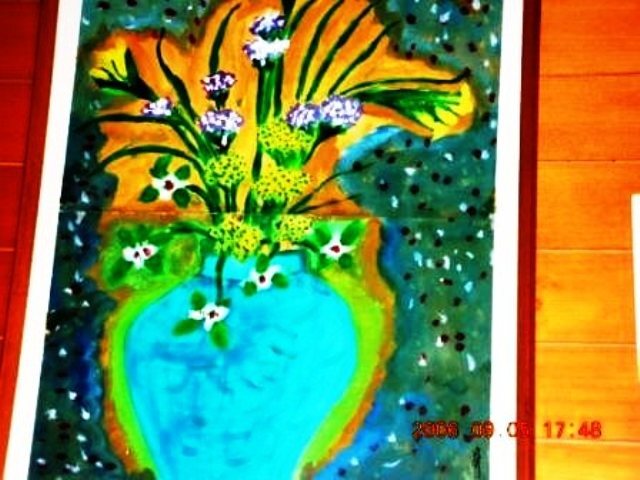*** >>>
静かなる湖のほとり、さざめく遠い記憶
ヘッセの「青春彷徨」を開けば 郷愁の詩に 目がそそがれ
若き日の夢、今は遠く、彼の地に心寄せ 故郷の面影を追い
空は広く、思いは深く、ヘッセの足跡を辿れば
静寂の中、自己を見つめ、郷愁の詩を詠み
過ぎ去りし日々の光と影、心の奥底に生き続け
ヘッセの魂、今ここに、郷愁の詩に息づく・・ ➀
*** >>>
*青春の彷徨と郷愁:---⑵
青春の日々は、遠い記憶の中に 光り輝き
時には痛みを伴い されど 心の中に放つ 永遠の輝き
ヘッセの一節に導かれ、振り返れば
郷愁の感情に 浮かぶ故郷の風景
若き日の彷徨は、自身を見つけ、成長するための道のり
郷愁は、人生の甘美な休息 過ぎ去りし日々への憧れ
未来への懸け橋ともなり そは心の中で、静かに息づき
ヘッセのように、青春の彷徨を経て、
郷愁の感情に 見出す人生の意味・・⑵
**** >>>
*青春の彷徨とHeimwehのさらなる旅;---⑶
青春の彷徨は、果てしなく 心はHeimwehに揺れ動き
故郷の記憶は 遠い灯台のように導く暗闇の中での光。
ヘッセの足跡を辿り 自由と束縛の間を彷徨い
若さの熱い鼓動は、痛みを伴うも
未知への恐れと期待に 心は熱きを抱き
Heimwehは、遠い故郷への共感 心の奥底で静かに響き
青春の彷徨は、新しい世界への扉を叩く。
故郷を離れ、新たな地を踏めば Heimwehは胸を締め付け
それでも、青春の旅はつづく 夢と現実の狭間
ヘッセの言葉に心寄せ、自身を探し
Heimwehを胸に秘め、強くなれと試練を乗り越え
青春の彷徨は、終わりなき旅 Heimwehは、その詩のメロディー
その旋律に乗り 道を切り開きゆく ---⑶
*** >>> /*95---*98 /*
*Exploring Hermann Hesse's "Heimweh": A Journey Through Nostalgia and Self-Discovery:----
Hermann Hesse's "Heimweh," also known by its original title "Peter Camenzind," is a profound exploration of the themes of nostalgia, nature, and the journey of self-discovery. Published in 1904, this work marked Hesse's debut as a novelist and set the stage for his illustrious literary career.
- The novel unfolds in the Swiss highlands, in the quaint and ancient village of Nimikon, where the majority of the inhabitants bear the surname Camenzind. The protagonist, Peter Camenzind, a native of this village, narrates his life story, offering readers a window into his soul and the environment that shaped him. From his childhood, Peter exhibits a deep affinity for nature, observing the rugged mountains, the wild Föhn winds, the smooth lakes, and the innocent flora with a poet's eye and love.
Peter's journey is not just a physical one through the landscapes of his homeland but also an internal quest for meaning and purpose.
As he grows, he ventures into the city with aspirations of becoming a writer. There, he forms a friendship with a vibrant young musician named Richard, but after Richard's untimely death and disillusioning experiences with superficial and vain acquaintances, Peter finds solace in the tranquility of rural life. His experiences in the city and countryside contrast sharply, highlighting the complexities of human relationships and the simplicity of life close to nature.
Upon receiving news of his father's worsening illness, Peter returns to Nimikon. Back in the village, he cares for his estranged father and reflects on the unchanging, age-old ways of village life. In his mature years, Peter looks back on his life with a serene and cheerful disposition, suggesting that the quiet days in Nimikon will continue unchanged.
"Heimweh" is not just a tale of a man's life; it is a meditation on the human condition, the beauty and transience of nature, and the solitude inherent in the human experience. Hesse's narrative is rich with introspection and a yearning for the past, making it a timeless piece that resonates with anyone who has ever felt the pull of nostalgia or the longing for a deeper understanding of self.
Hesse's work is celebrated for its lyrical prose and its ability to capture the essence of the human spirit. "Heimweh" is no exception, offering a narrative that is both poignant and enlightening, inviting readers to reflect on their own journeys and the landscapes—both internal and external—that define them.
For those interested in delving into the world of Hermann Hesse, "Heimweh" serves as an excellent starting point, providing a glimpse into the themes and style that would come to characterize much of his later work. It is a novel that encourages introspection and offers a sense of companionship to those on their own paths of self-discovery.
*Hermann Hesse: A Literary Beacon of Individualism and Spiritual Quest;---
Hermann Hesse, Born on July 2, 1877, in Calw, Germany, Hesse's journey was one of profound introspection and literary brilliance, culminating in the Nobel Prize for Literature in 1946.
Hesse's early life was marked by a struggle against the rigid educational expectations of his time. His experiences at the Maulbronn seminary, which he left less than a year later, and his distaste for conventional schooling, would later find expression in his novel "Beneath the Wheel," a poignant critique of an education system that stifles individuality.
His literary debut came with a collection of poems in 1899, but it was the novel "Peter Camenzind," published in 1904, that established him as a promising writer. This novel, like much of his later work, delved into the inner life of an artist and the search for meaning beyond the superficialities of society.
A visit to India in 1911 profoundly influenced Hesse, introducing him to Eastern mysticism, which would become a recurring theme in his works. His engagement with Indian spirituality is most evident in "Siddhartha," a narrative set in the time of the Buddha, which explores the quest for enlightenment.
During World War I, Hesse's pacifist stance led him to Switzerland, where he would eventually become a citizen. His opposition to militarism and nationalism during this tumultuous period was a testament to his deep conviction in the value of peace and individual thought.
The interwar years were a period of personal crisis for Hesse, leading him to undergo psychoanalysis with J.B. Lang, a disciple of Carl Jung. This experience influenced works such as "Demian," which examines the journey to self-awareness.
Hesse's oeuvre is characterized by its exploration of the individual's search for authenticity, self-knowledge, and spirituality. His masterpieces, including "Steppenwolf," "Narcissus and Goldmund," continue to inspire readers with their lyrical prose and philosophical depth.。>>>
















